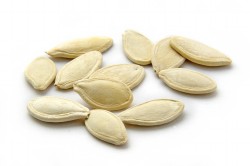15 Proven Tips to Help Strengthen Human Bones and Joints
 Bones and joints are the main human frame, which is responsible for motor actions and protects internal organs from various injuries.
Bones and joints are the main human frame, which is responsible for motor actions and protects internal organs from various injuries.
The functional state and anatomical integrity of the musculoskeletal system are influenced by many factors: bad habits, lifestyle, diet, age of a person.
According to scientists, in order to maintain the health of bone tissue and joints, it is necessary to follow a number of recommendations regarding lifestyle and the nature of food consumed. This is especially important for people over the age of 50.
Below we have reviewed 15 tips that will help strengthen bones and joints, avoid many diseases of the musculoskeletal system, and also improve the condition of existing pathologies without taking medications.
1. Eat more fresh vegetables
 Vegetables are an ideal source of vitamin C, which stimulates bone growth processes and helps prevent osteoporosis by activating the formation of the trabecular part of bones by activating osteoblasts.
Vegetables are an ideal source of vitamin C, which stimulates bone growth processes and helps prevent osteoporosis by activating the formation of the trabecular part of bones by activating osteoblasts.
Vegetables, according to American research , they also have a pronounced antioxidant effect, which protects the skeleton from any toxic and metabolic damage.
Fresh vegetables make up for the deficiency of macro- and microelements in the body, increase bone mineral density (the higher it is, the lower the risk of fracture).
The most important mineral is calcium. The largest amount of it is found in green onions and broccoli.
One of the scientific studies showed that in women (over the age of 50) who consume onions on a regular basis, osteoporosis is less common, and the risk of hip fracture drops by 20%.
Broccoli, parsley, cabbage and spinach are equally important for the body. Broccoli, according to the experiments of Chinese scientists , inhibits inflammatory processes in joints (inhibits the release of tumor necrosis factor-a, as well as interleukins 1 and 6), promotes the prevention of osteoporosis of the periarticular parts of bones.
Proven that spinach interferes with the production of pro-inflammatory cytokines. Is celebrated positive dynamics in the use of spinach against the background of rheumatoid arthritis and other autoimmune pathologies.
11 more foods that are good for joints , you will find it in a separate article.
2. Eat enough protein
 Protein food is a universal source of building material for any part of the human body. Bones are about 50% protein.
Protein food is a universal source of building material for any part of the human body. Bones are about 50% protein.
Research shows that low protein content in the diet negatively affects the processes of calcium formation and promotes bone destruction.
One of the largest works of American scientists (almost 150,000 participants) proved that an adequate level of protein intake in women aged 50 to 79 years is closely associated with a reduced risk of fractures of the forearm and hip neck.
However, it is not recommended to abuse proteins. In excess, there is a leaching of calcium from the bones to reduce the acidity of the blood. As a result, the fragility of bone tissue increases.
The table below shows physiologically the norms of protein intake per day for representatives of different age groups.
| Gender and age | Total protein per day, grams | The norm of animal proteins per day, grams |
| Children under 13 years old | 96 | 58 |
| 14-17 years old (guys) | 106 | 64 |
| 14-17 years old (girls) | 93 | 56 |
| 18-25 years old (men) | 113 | 68 |
| 18-25 years old (women) | 96 | 58 |
| From 26 years old | 90-100 | 54-60 |
| Pregnant | 109 | 65 |
3. Maintain a healthy weight
 Every person needs to maintain a healthy body weight.
Every person needs to maintain a healthy body weight.
Body weight deficit leads to osteoporosis, which is especially dangerous for women who have run out of menstrual function, and estrogen has lost its protective effect against bones.
Scientists from Denmark claim that low weight is the most important risk factor for bone loss in old age.
Obesity is no less dangerous , which significantly increases the load on the motor apparatus. If you are overweight, the metabolism in the bones changes, they are subject to deformations and a high risk of fractures. On the part of the joints, the early development of destructive changes (arthrosis) is characteristic. First of all, the knee, ankle and hip joints suffer. Then there are problems with the shoulder, elbow and wrist joints
The rate of weight loss also affects the condition of bone tissue. With the rapid loss of extra pounds, according to scientific data , bone density decreases, and the higher the initial weight, the more pronounced this pathological process is.
The weight norm is calculated by such an indicator as body mass index (BMI) - weight (kg) / height squared (m).
For example, human weight = 90 kg, height = 175 cm. Therefore, the body mass index in this case is equal to: BMI = 90 : (1,75 × 1,75) = 29,39.
A value in the range from 18.5 to 24.99 is considered normal.
4. Give up low-calorie diets
 Excessive weight loss cravings can negatively affect the work of the musculoskeletal system. Malnutrition provokes a decrease in metabolic processes and loss of muscle tone, as a result, bone tissues begin to decrease their strength, and less intra-articular fluid is secreted in the joints.
Excessive weight loss cravings can negatively affect the work of the musculoskeletal system. Malnutrition provokes a decrease in metabolic processes and loss of muscle tone, as a result, bone tissues begin to decrease their strength, and less intra-articular fluid is secreted in the joints.
To maintain bone health the diet should contain at least 1000 calories per day (even during the treatment of obesity).
It should be noted separately proceedings of scientists at the University of Pennsylvania . Obese women followed a diet, the energy value of the diet was only 925 calories per day for 16 weeks. As a result, they had a decrease in bone density in the femoral neck area. This anatomical area is the most dangerous in terms of fractures, and the fractures themselves require long-term treatment (more than 6 months) and surgical interventions.
Increasing the caloric content of the diet helps to prevent the leaching of valuable minerals from bones and normalize the general condition.
5. Do strength exercises
 Various sports (athletics, marathon running, etc.) help strengthen skeletal muscles, increase the strength of the ligamentous apparatus
, however , they have practically no effect on the condition of the bones.
Various sports (athletics, marathon running, etc.) help strengthen skeletal muscles, increase the strength of the ligamentous apparatus
, however , they have practically no effect on the condition of the bones.
The most useful for the "support system" are heavy strength exercises. They allow you to maintain bone strength for a long time, and also reduce the activity of demineralization processes that increase with age.
Lifestyle studies in men of the middle and older age groups demonstrated that, with systematic (for 9 months) performance of strength exercises, there is an improvement in metabolic processes in bone tissue, increases the strength and even elasticity of bones.
Proven that activities such as weight training and jumping increase the bone density of the entire body (especially the lumbar region of the spine ).
It is extremely important that the loads are adequate for a person's physical fitness.
6. Take more calcium
 Bone is constantly undergoing processes of destruction and formation of new tissues. Therefore, the components for bone synthesis (primarily calcium) must enter the body daily.
Bone is constantly undergoing processes of destruction and formation of new tissues. Therefore, the components for bone synthesis (primarily calcium) must enter the body daily.
According to US health experts , an ordinary person should consume at least 1.0 g of calcium per day, adolescents – 1.3 g, elderly people – 1.2 g.
The process of calcium absorption has certain features. The more macronutrient is supplied at a time, the less it will go into the bone tissue. Therefore, you need to consume calcium in small portions throughout the day.
The highest calcium content is found in seafood, plant seeds, milk and hard cheeses, legumes and nuts.
Calcium has a beneficial effect on the work of the whole body. For example, one of the scientific papers revealed that high macronutrient intake reduces the risk of cardiovascular disease by 22%.
But it's important not to overdo it. Known that excess calcium in the body causes a wide range of pathologies (for example, urolithiasis).
Also pay attention to 6 Foods Most Useful for Strengthening Bones .
7. Add vitamins K and D to your diet
 Vitamins K and D are extremely important for maintaining the integrity of bone tissue, increasing the strength of cartilage in joints.
Vitamins K and D are extremely important for maintaining the integrity of bone tissue, increasing the strength of cartilage in joints.
Experimental data indicate that people with low vitamin D content in the diet (especially in winter and autumn) have low tissue density and are more prone to fractures.
Optimal sources of vitamin D are sunlight and foods such as oily fish, liver, and hard cheeses.
Vitamin K contributes to the modification of osteocalcin into a special form, which is necessary for adequate bone formation and inhibition of calcium leaching.
According to various studies ( times , two ), vitamin K deficiency increases the risk of hip fracture by 21-30%.
The leaders in the content of this biologically active substance are: parsley, dandelion leaves, basil, spinach, coriander, lettuce, broccoli cabbage.
8. Eat foods with vitamin E
 Vitamin E has powerful antioxidant and anti-inflammatory properties.
Vitamin E has powerful antioxidant and anti-inflammatory properties.
Vitamin E also helps to improve microcirculation in bone tissue, prevents or improves the course of autoimmune joint diseases (rheumatoid arthritis).
It is recommended to use vitamin E in its natural form, and not in the form of artificial additives. Scientific research has shown that the consumption of such additives reduces the mass of bone tissue and significantly inhibits regenerative processes.
The optimal amount of vitamin E is found in pumpkin and sunflower seeds, vegetable oils, kiwi, mango, tomatoes.
9. Add more magnesium and zinc to your diet
 Calcium is far from the only mineral needed by bones. Magnesium and zinc play an equally important role.
Calcium is far from the only mineral needed by bones. Magnesium and zinc play an equally important role.
Magnesium promotes transformation of vitamin D into an active form that is able to absorb calcium.
The maximum concentration of the element is noted in nuts, seaweed and buckwheat.
Zinc helps to maintain a constant mineral composition of bones, increases the synthesis of bone-forming cells (osteoblasts). Scientific research demonstrates that adding zinc to the diet can increase bone strength in both a child and an elderly person.
The optimal foods for zinc replenishment are beef, spinach, flax seeds, oysters, shrimp and pumpkin seeds.
10. Provide the body with collagen
 Collagen is a special high–molecular protein that is necessary to maintain the anatomical integrity of bones and the functional state of joints.
Collagen is a special high–molecular protein that is necessary to maintain the anatomical integrity of bones and the functional state of joints.
During digestion, collagen is broken down to the following amino acids: proline, lysine, glycine. They are an important structural element for bone tissue, cartilage, ligaments and muscles.
A major study has proven It is shown that the consumption of collagen on the background of osteoporosis leads to a significant decrease in markers of bone collagen breakdown.
A lot of collagen is found in bone broth, gelatin, eggs and citrus fruits.
Please note! Scientists claim that for the full absorption and synthesis of collagen in the body, sufficient intake of vitamin C is extremely important (especially for postmenopausal women).
11. Limit alcohol intake
 Alcohol abuse is extremely dangerous for the musculoskeletal system.
Alcohol abuse is extremely dangerous for the musculoskeletal system.
A dose of pure ethanol equal to 30 ml per day for men and 15 ml for women is considered safe.
Exceeding the described indicator is fraught with the development of cytotoxic effects, destruction of bone beams, and suppression of osteoblasts. On the part of the joints, an increase in the activity of inflammatory processes is possible due to a violation of the coordination of the release of inflammatory mediators.
For example, experiments on rodents have shown that ethanol causes damage to articular cartilage, causes osteoarthritis.
Other studies demonstrate It is shown that the volume of alcohol consumption is also closely related to the severity of the course of gout, a severe metabolic disease of the joints.
8 More Joint-destroying Foods , you will find it in a separate article.
12. Give up smoking
 When inhaling tobacco smoke, a huge amount of harmful substances penetrates into the human body, which contribute to the development of oncological and cardiovascular diseases, disrupt the supply of oxygen and nutrients to all tissues.
When inhaling tobacco smoke, a huge amount of harmful substances penetrates into the human body, which contribute to the development of oncological and cardiovascular diseases, disrupt the supply of oxygen and nutrients to all tissues.
It is equally important that smoking reduces the ability to absorb minerals valuable for bones.
According to German scientists , people who smoke are more at risk of developing osteoporosis and fractures.
Secondhand smoke is less dangerous, but even it increases the risk of clinical manifestation of osteoporosis in the future (in 10-15 years).
13. Carefully study the product labels
 The modern food industry uses a huge amount of salt, various preservatives, dyes and flavor enhancers in the production of products, which give an attractive appearance and contribute to an increase in shelf life.
The modern food industry uses a huge amount of salt, various preservatives, dyes and flavor enhancers in the production of products, which give an attractive appearance and contribute to an increase in shelf life.
Abuse of these substances provokes malignant cell transformations, increases the frequency of autoimmune and allergic pathologies.
Korean scientists have discovered that mice with a high amount of salt in their diet are more likely to develop arthritis. The disease is also characterized by a more severe course.
14. Eat less sweets
 With increased consumption of cakes, pastries, sweets, pastry, there is a high incidence of diseases of the musculoskeletal system caused by autoimmune mechanisms.
With increased consumption of cakes, pastries, sweets, pastry, there is a high incidence of diseases of the musculoskeletal system caused by autoimmune mechanisms.
Scientists from the state of Massachusetts (USA) found that frequent consumption of sweet water is associated with the development of rheumatoid arthritis.
15. Take omega-3
 Omega-3 fatty acids have powerful anti-inflammatory properties. They also prevent the loss of bone and muscle tissue, and provide reliable prevention of arthritis and osteoporosis.
Omega-3 fatty acids have powerful anti-inflammatory properties. They also prevent the loss of bone and muscle tissue, and provide reliable prevention of arthritis and osteoporosis.
It is equally important to maintain a balance between omega-3 and omega-6 fatty acids. According to scientists , the ratio of omega-3 to omega-6 should be 4:1. With deviations, bone tissue may be thinned.
One of the American studies found that high consumption of fish (it is a valuable source of omega-3 polyunsaturated acids) leads to a slowdown in resorptive processes and increases bone tissue recovery.
Good sources of omega-3 are: seafood, linseed oil, walnuts. Omega-3 can also be taken in the form of fish oil capsules.
Conclusion
Thus, the health of bone and cartilage tissue, as well as muscles and ligaments, directly depends on lifestyle and daily diet. Correction of bad habits and the inclusion of healthy foods contributes to the normalization of metabolic processes at the level of the musculoskeletal system and the prevention of a wide range of pathologies.





